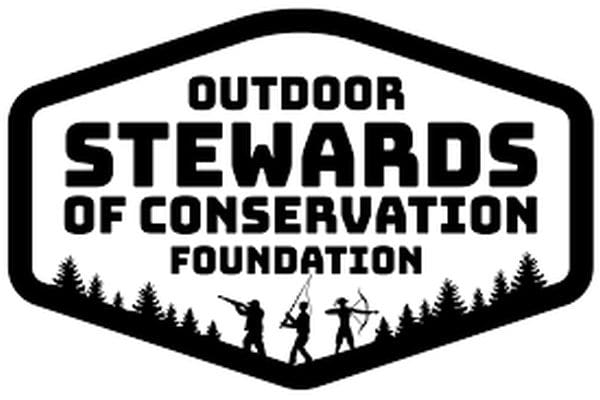The Power of Local Retail: Your hometown sporting goods store doesn’t just sell gear. It also dispenses valuable intel about where to use that new rod or gun. -Andrew McKean
Richard Sprague has owned Sprague’s Sports gun store in Yuma, Ariz., for nearly 40 years. He literally grew up in the store, which was founded by his father 68 years ago, and while it’s changed physical locations, doubled in size, and added a full indoor gun range, Sprague’s still delivers the same value proposition to its customers: fair prices on good products, with full service after the sale and local intel on where to use the gear customers buy there.
If Sprague’s Sports’ personalized business model seems quaint, it’s because as price-conscious shoppers flock to the internet and national-franchise outlets, smaller full-service stores have been pushed out of the mainstream.
But sporting goods aren’t like grocery or hardware stores. Acquiring a gun, for many customers, is a considered purchase that’s the culmination of weeks or months of research, and trusted experts influence buying decisions. Richard Sprague says his employees aim to be those trusted experts.
“We pride ourselves in hiring reliable people who know the community,” says Sprague. “If we have a customer in the store more than a few times our employees probably know who they’re dealing with, down to their name, what they shoot, and what they’re in the store to buy. For customers, that personal attention to service is important, but so is getting to deal with the same people each time you go in the store. Our employees are also avid users of the product they’re selling.”
While retailers often focus on the customer experience, from a store’s layout and inventory to pricing and return policies, Sprague spends just as much attention on employee retention.
“We traditionally haven’t had much employee turnover,” he says. “The first employee I hired 40 years ago still works here. We have around 30 employees, and a lot of them have worked here for 10 to 25 years. It’s all about being competitive on both sides of the counter. You have to be competitive for your customers with the products you sell and the services you offer, but then you have to be competitive on the other side of the counter with your employees. You have to have competitive pay and benefits, and you have to pay attention to the marketplace, and you have to give employees a reason to pick you. Two years ago, after 66 years in business, we became an employee-owned company so that we could give employees another reason to pick us.”
D&G Sports and Western, located in Glasgow, Mont., has a similar origin story as Sprague’s. Founded by Darrell Morehouse’s father and uncle, Morehouse is transitioning the operation to his son, Sam. Both Morehouses are fixtures at the store, which sells guns, ammunition, fishing gear, but also a wide range of shoes, apparel, consumer products, and athletic gear.
“I grew up in this store, but started working for pay when I was a sophomore in high school,” says Sam Morehouse. “The worst thing about working with my dad is that we can’t hunt or fish together except on Sundays, when the store is closed. The other worst thing is that we’re stuck working when everybody else is out hunting or fishing.”
But Morehouse says D&G employees’ local knowledge of where to fish, hunt, and shoot is an important point of differentiation with competitors, which includes the internet and national retailers in larger towns.
“Even though we’re in a rural area, we feel the competition from the big-box stores and from the internet,” says Sam Morehouse. “We have to be competitive on price, because anybody can get on their cell phones and see what an item sells for in Billings, or online. We try to be competitive on inventory, but I think our biggest competitive advantage is local knowledge. The fact that we’re out there in the field, using the gear we sell, makes us more knowledgeable salesmen.”
Back in Yuma, Richard Sprague offers a lifetime warranty on new guns sold at Sprague’s, and even most used guns.
“It costs me some money to do that,” says Sprague. “I probably spend a few thousand dollars a year taking care of customers’ issues and problems, but the customer doesn’t have to worry about it, and that’s one reason they keep coming back to our store.”
Sprague’s has evolved with customers’ shopping habits. The store has invested in a website to give customers more buying options, and to reach customers who may not live in southwest Arizona. Sprague built an indoor shooting range adjacent to the sporting goods store several years ago, and expanded it in 2021 to include a classroom and more shooting lanes. Customers are encouraged to take guns they’re interested in buying from the store to the range to send rounds downrange in order to confirm their choice.
“Our range is thriving,” reports Sprague. “As long as you take care of it, make it important to you, and staff it like it’s its own business, customers gravitate to it. They appreciate having a clean, safe place to go shoot and also to get training and expertise and try out new guns. I think it’s given us a real strong advantage.”
Sprague and Morehouse say wide variability in sales is a challenge that smaller retailers share.
“Our industry is driven by seasonal demand, same as it always has been,” says Sprague. “But increasingly, our industry is also driven by the news of the day, and that can be local, state, national, and even world news. Our sales can turn on or off like a switch based on what customers are hearing in the news. It can be hard to plan for that sort of variability.”
Sprague adds that the firearms market is increasingly splintered into narrowing niches.
“You have the range and recreational shooters,” he says. “But you also have a rising tactical shooter, and a shooter who is interested in home defense. You still have the stores that are focused on the hunting side of the business, but there are fewer of them. In my experience, every business can have a different personality, and I’d observe that the ones that have hands-on owner/operators run differently and have an advantage over the cookie-cutter models with an owner that’s somewhere else and thinking about things besides serving the customer.”
About the Outdoor Industry Communication Council (OICC):
Formed around the commitment to educate all Americans about the origins of conservation funding in America, the Outdoor Industry Communication Council (OICC) is managed by Outdoor Stewards of Conservation Foundation (OSCF) and Wildlife Management Institute (WMI). OICC works with outdoor writers such as Andrew McKean, to develop informative content that is available to all outdoor organizations and media at no cost. A primary goal of the OICC is to better inform and promote the positive contributions that wildlife agencies, industry manufacturers, NGO’s and end users such as hunters, anglers, trappers and target shooters make to conservation. Outdoor organizations interested in conservation are welcome to use any OICC content to expand the reach of messages created by the OICC. To become a member of the Outdoor Industry Communication Council, contact Jim Curcuruto of OSCF (203) 450-7202 [email protected] or Jon Gassett of WMI at (502) 330-9025 [email protected]. There are no costs involved to become a member of the OICC. Members may utilize OICC materials as they see fit with no restrictions. For additional information visit https://www.outdoorstewards.org/outdoor-industry-communication-council-oicc/
This project is funded by the Multistate Conservation Grant Program (F23AP00404), a program supported with funds from the Wildlife and Sport Fish Restoration Program and jointly managed by the Association of Fish and Wildlife Agencies and the U.S. Fish and Wildlife Service.
Read the full article here




